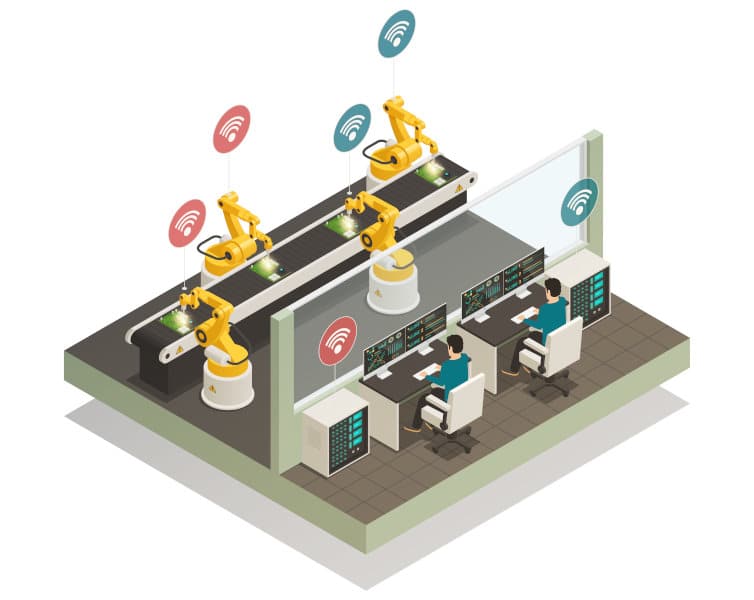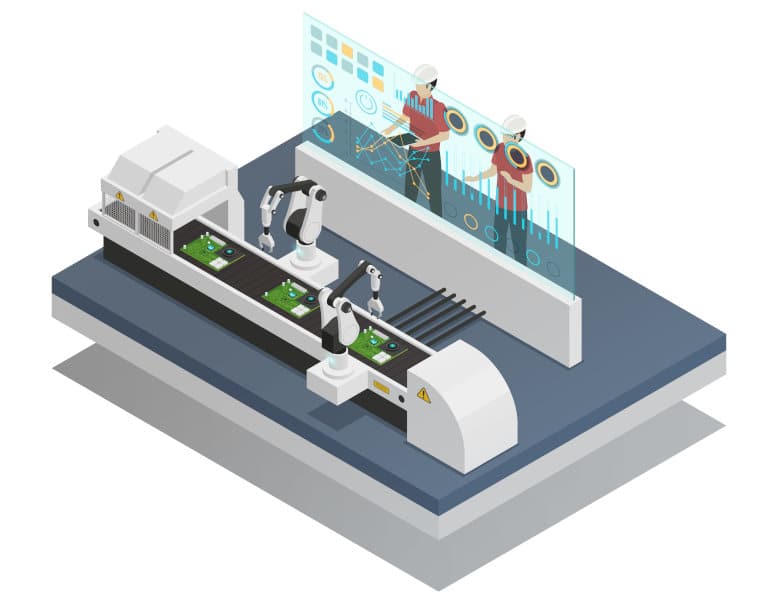Windchill is a complete product lifecycle management system developed by PTC. It offers data and process management, document management and change traceability. Find out everything you need to know about this platform and how you can master it!
Companies in industries such as aerospace, automotive, electronics and healthcare are under increasing competitive pressure to develop high-quality products while reducing costs and time to market.
To achieve this, they are turning to Product Life Management (PLM). This discipline encompasses a range of processes, methods and technologies to manage the entire lifecycle of a product, from design to manufacture.
In the past, however, data and document management was often fragmented, with information scattered across multiple systems and departments. Collaboration between design, development, production and marketing teams was limited.
This led to delays and errors in the development process. In addition, the traceability of changes and compliance with regulations was a complex challenge.
To overcome these obstacles, PTC (Parametric Technology Corporation) developed an innovative solution in the late 1990s that enabled companies to make more informed decisions, optimise their resources and remain competitive: Windchill.
What is it?
Initially conceived as a technical data management solution, Windchill has rapidly evolved into a complete PLM system.
Over the years, it has been enhanced by numerous updates and improvements, reinforcing its position as the market leader in product lifecycle management.
Key functionalities include technical data management, document management, business process management, team collaboration, change traceability and regulatory compliance.
The platform enables companies to centralise and streamline the management of the entire product lifecycle, from initial design through to commissioning and maintenance.
By centralising data and facilitating collaboration between teams, it enables companies to reduce costs.
Its application extends to a wide variety of sectors.

What are the main features?
One of the core features of Windchill is its ability to efficiently manage product data and documents. Within this centralised environment, companies can store, organise and share a wide variety of data.
This includes technical specifications, design drawings, test reports and regulatory documents. With fast, secure access to relevant information, teams can collaborate seamlessly and make the right decisions throughout the lifecycle.
In addition, integrated collaboration tools enable geographically dispersed users to share information, comment on documents, track project progress and coordinate efforts efficiently.
The project management features are very useful for defining tasks, allocating resources, monitoring deadlines and managing risks. This ensures that projects progress smoothly and to specification.
Configuration management options also help to track and control changes to products and components throughout the lifecycle.
The integration of business processes, document management and team collaboration provides a holistic and transparent view of the product, helping to make strategic decisions and maximise product value.
What's new in Windchill 13
Version 13 of Windchill, which will be launched in June 2023, brings a number of important enhancements. Windchill Workgroup Manager is a client application for managing data from multiple CAD applications.
It has been enhanced for better interoperability, and allows users to decouple maintenance of server and client applications to improve the experience.
In addition, 3D visualisation performance for complex and extremely large product structures has been greatly enhanced. Thanks to QuickView, visualisation is smoother and faster.
With the dynamic positioning capabilities of Windchill Smart Platforms, designers can also create a platform architecture that defines the interface across an entire product structure.
Variants can be created and visualised directly, without the need to create multiple copies in CAD. This saves valuable time.
Users can take advantage of these multiple enhancements to visualise, synchronise and extend the flow of information between engineering and manufacturing. MPM’s new QuickView mode enables very large structures to be viewed directly in manufacturing planning environments.
In addition, the new automatic BOM transformation capabilities use user-defined rules. This means that updates can be reviewed more easily.
This thirteenth release also simplifies the regulatory submission process for the medical device industry. Stakeholders can participate in the change process, and users can also add information links for product families.

Windchill named PLM champion by Forrester
According to Forrester’s Wave report for 2023, based on a 22-point assessment of the major players in the PLM industry, Windchill has climbed to the top of the ranking alongside Siemens Teamcenter/Xcelerator.
It outperforms other solutions such as Dassault Systèmes 3DEXPERIENCE, Autodesk Vault and Fusion 360. One of its strengths is its “innovation roadmap” supporting the most critical use cases for digital continuity.
The solution received top marks for its long-term PLM design capabilities, and for use cases in manufacturing, service use cases and platform features.
PTC’s market approach, execution roadmap and product vision were also recognised. According to the firm, its closed-loop vision and the acquisition of start-ups such as Codebeamer and ServiceMax were the main reasons for the accolade.
Its main weaknesses are its use cases in the supply sector, and its planned performance and improvements in terms of strategies.
With over 12,000 customers including J&J, the US Navy, Volvo Group and Raytheon, Widnchill is undoubtedly one of the heavyweights of the PLM industry. What also sets it apart is its strategic investment in the ThingWorx IOT platform.
How do I use and implement Windchill?
The first step is the installation of Windchill, which requires a thorough understanding of specific business needs and advanced technical skills.
Companies need to assess hardware and software requirements, define workflows and customise the user interface to meet the unique needs of their organisation.
Careful planning and close collaboration between IT and business teams are essential to ensure a successful implementation.
Subsequently, the user interface is designed to be user-friendly and intuitive, to provide a seamless and consistent experience. Users can access the various functionalities via a modern web interface that can be customised according to individual roles and responsibilities.
Navigation is simple and fluid, enabling users to find the information they need quickly and complete tasks efficiently.
However, once deployed, companies need to establish data and project management processes to maximise the value of the software. This involves defining workflows, establishing document management policies and training users in best practice.
Over time, processes need to be continually evaluated and optimised to align with business objectives and ensure effective long-term use.

Conclusion: Windchill, a PLM platform adapted to the challenges of Industry 4.0
In the coming years, Windchill will continue to incorporate new technologies and innovations to improve its functionality and efficiency. Artificial intelligence, advanced data analysis and augmented reality are just some of the innovations that may shape its future.
This evolution will lead to its widespread adoption across a wide range of industries, and to deeper integration with other enterprise systems such as ERP and IOT systems.
This software will therefore play a central role in the Industry 4.0 era as an essential platform for the digital transformation of businesses. It will enable companies to create intelligent, connected and personalised products.
However, its successful adoption depends on user training and engagement. That’s why it’s important to invest in comprehensive programmes to familiarise employees with the features and best practices.
To learn how to use Windchill, you can choose DataScientest. Our distance learning courses will enable you to fully master this solution, so that you can use it within your company!
You’ll receive a state-recognised diploma and official certification. All our courses take a practical approach, so that you can apply the knowledge you have acquired without having to wait until the end of the course.
All our programmes can be completed entirely by distance learning, and our organisation is eligible for funding options. Discover Windchill!










